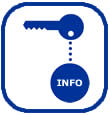 Combining Standards and Major Assessment K-U-Dos (knowledge, understanding, and skills)
Combining Standards and Major Assessment K-U-Dos (knowledge, understanding, and skills)
A Standards-Based Model for Differentiated Instruction
Step 1: Determine K-U-Dos (Essential concepts)
Step 2: Pre-Assess students (Based on K-U-Dos)
Step 3: Modify and adapt lesson content, process, and products. Create lessons that challenge and support students based on student needs (readiness, interests, and learning profiles).
Step 4: Continue to differentiate as necessary, based on ongoing assessment.
Pre-Assessment
- Discover what your students already know, understand, and can do.
- Provide adequate time in advance of implementation to adjust your plans and meet the learning needs of your specific group of students.
Academic Standards as well as Summative Assessments inform you about what your students should Know, Understand, and Do (K-U-Dos). Heacox and Thome suggest that by combining what you know about both of these elements, it is possible to arrive at a narrower, more precise set of standards from which to work and plan instruction.
Thome advises creating a matrix of the major assessments your students will be taking in a year. Then, by comparing the K-U-Dos (knowledge, understanding, and skills) from these tests to the state and district standards, a teacher can select the standards that best match these exams. These essentials become the basis for instruction throughout the year.
| Student Name |
Grade level Pre-Assessment |
First Quarter Benchmark Assessment | Second Quarter Benchmark Assessment |
Third Quarter Benchmark Assessment | Fourth Quarter Benchmark Assessment |
| Student A |
|||||
| Student B |
|||||
| Student C |
|||||
| Student D |
Since there are so many academic standards in many states, this process helps teachers to address the ones that are most essential to their students’ success. Teachers don’t have the time to teach “junk” — information and activities that have no connection to the standards that will be assessed. As Carol Ann Tomlinson tells us, “When the curriculum ‘covers’ 500 pages, it is difficult to do much more than drag everyone through those pages in the time available. On the other hand, focusing on key concepts and generalizations can ensure that all learners gain powerful understandings that serve as building blocks for meaning and access to other knowledge (Tomlinson, 2001a).
Just like a rubric or scoring guide, this kind of proactive planning and identification of the ultimate goals of instruction gives students a fair chance at learning what they need to know. If you believe what students are tested on is not valuable, then the tests need to change. But until tests are changed, it is not helpful to students to teach them fun and interesting things that aren’t related to either the standards or the K-U-Dos of their yearly state, district, or national tests. Teaching about information and skills that are not on these tests does not prepare students to succeed in the ways our current system of education measures achievement. Since students are motivated by fun, engaging, and interesting topics, the challenge is to use them as the vehicle for learning the required standards.
“When the curriculum, instruction, and assessment focus on such ‘big ideas’ and essential questions, they signal to students and parents that the underlying goal of all school efforts is to improve student learning of important content, not merely to traverse a textbook or practice for a standardized test.”
— Carol Ann Tomlinson and Jay McTighe (2006)
Integrating Differentiated Instruction & Understanding by Design (p. 27). Alexandria, VA: ASCD.
